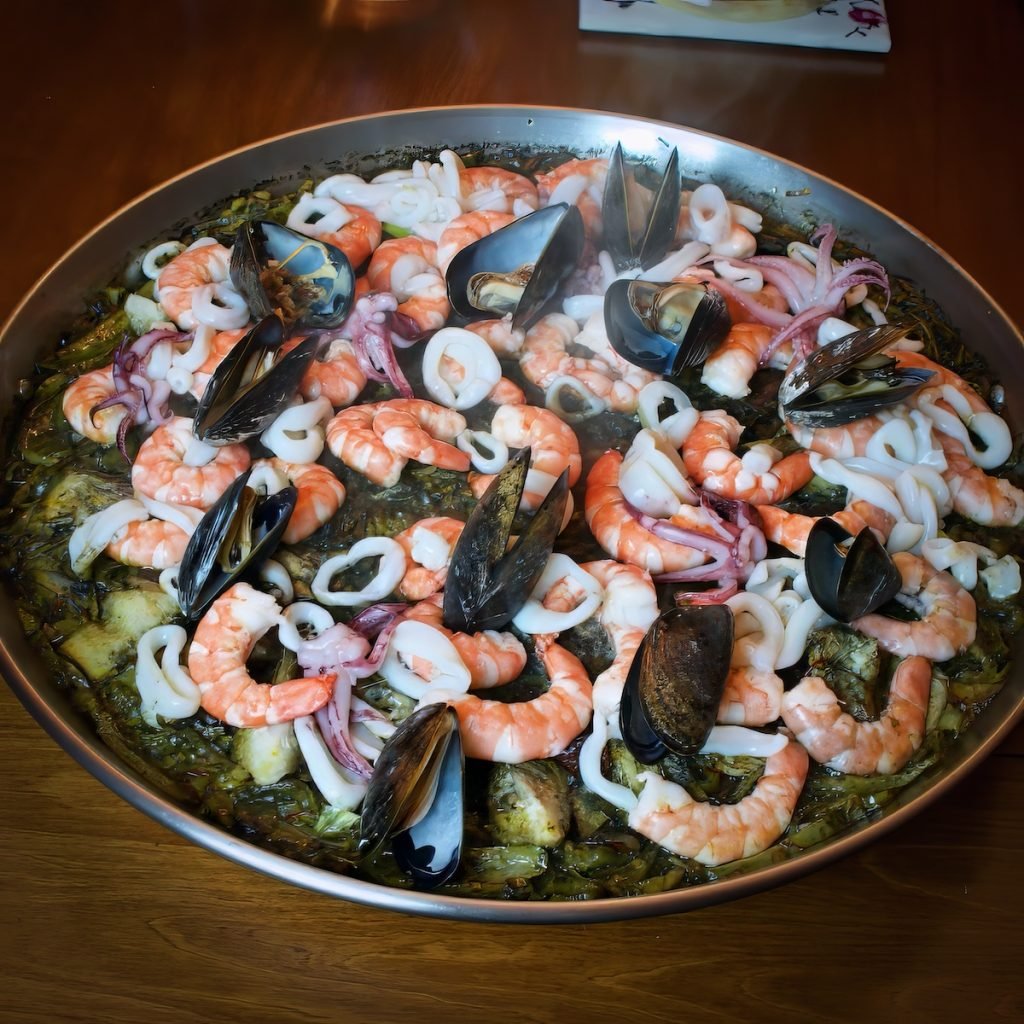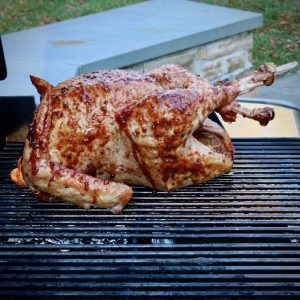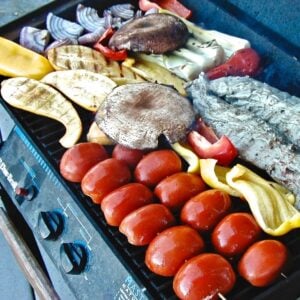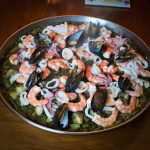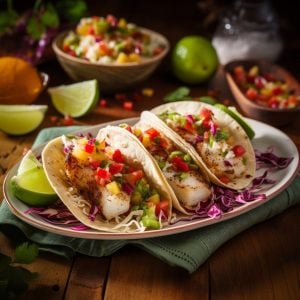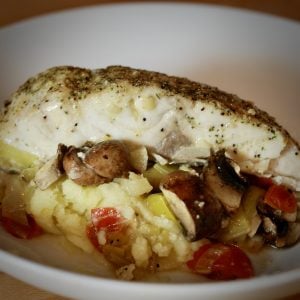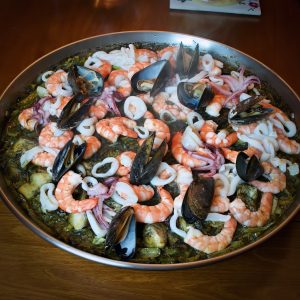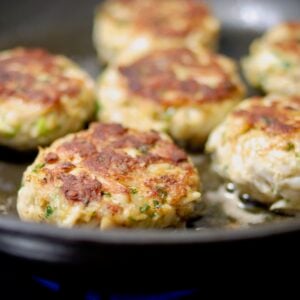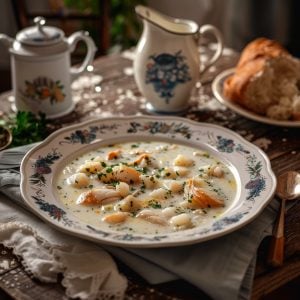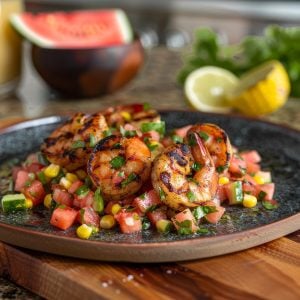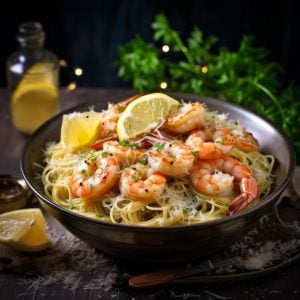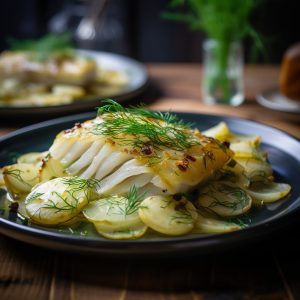Valencia Paella Recipe
Aunt Judy is my wife’s sister, but we’ve been calling her Aunt Judy to our kids for as long as I can remember, so it has become an affectionate nickname in our home. Judy is an incredible cook who loves to learn everything she can about global cuisine, including this Valencia Paella recipe.
She and her husband, Bill, travel a lot, and when they do, they typically come home with a new recipe, cooking technique, or ingredient to share with the rest of us. She learned how to make paella on her recent trip to Spain in December.
She and Bill visited us a few weeks ago and shared her story of making this classic Spanish meal. She told us how she learned this incredible recipe, so I asked if she would write about it so I could share it with my readers. Thankfully, she agreed.
The photo above shows the version of Paella she prepared at our house on this visit. She made it with squid, shrimp, and mussels. So here is Aunt Judy’s account of her paella experience in Spain.
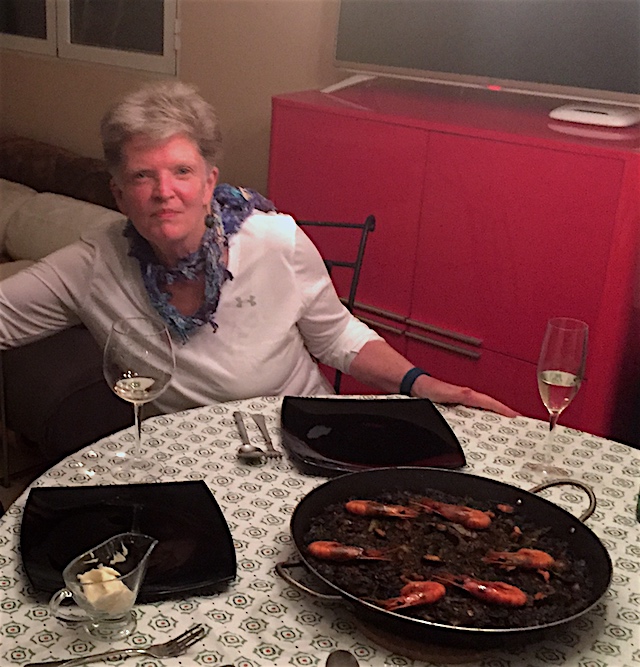
Aunt Judy’s Classic Paella from Valencia, Spain
by Aunt Judy – sister-in-law, world traveler, great cook
We spent two weeks in Spain last December. The first week was my husband’s birthday trip to Barcelona, which we spent “tripping” on Gaudi!
The second week was a sunny winter beach vacation in Alicante with our daughter and her two children from Sligo, Ireland. In between, we spent two days in Valencia to see the sights. Little did we realize the culinary adventure in store for us there!
Before we arrived at our VRBO apartment, our host Emilio contacted us and offered to teach us how to make paella. We accepted his offer immediately and selected black seafood paella from his listed options. (You can add any combination of ingredients to paella—see Mark Bittman’s master recipe .)
When we arrived, he had already purchased all the ingredients from the market, including fresh vegetables and seafood. We had such a good time putting it all together that Emilio stayed and joined us for dinner.
The next day, my husband Bill and I went to the market to replenish our paella ingredients, and we made it again that night. It was almost as good as Emilio’s. So we really can’t recommend any other restaurants in Valencia!
Traditionally, you serve the paella by carrying the paella pan right to the table, and everyone eats directly out of it. Of course, you can also plate individual servings, but I still think having the finished paella pan on the table is so spectacular you want to have it as the center of attention so everyone can “ooh and aah”!
Also, seafood paella is traditionally served with aioli—a garlic mayonnaise—and a great fat! It’s sort of like ordering snails so you can eat the garlic butter.
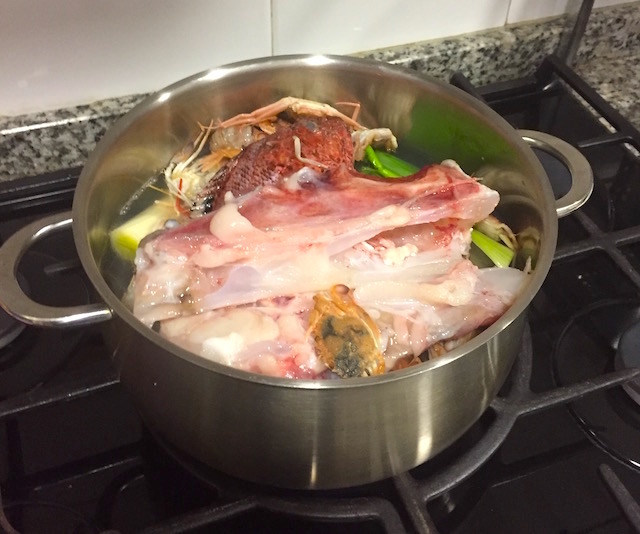
Prepare the Seafood Broth
We started by bubbling the fresh seafood broth on the stove; it needs to be hot before adding it to the paella pan. I have not yet made a fresh seafood broth at home—just from a box.
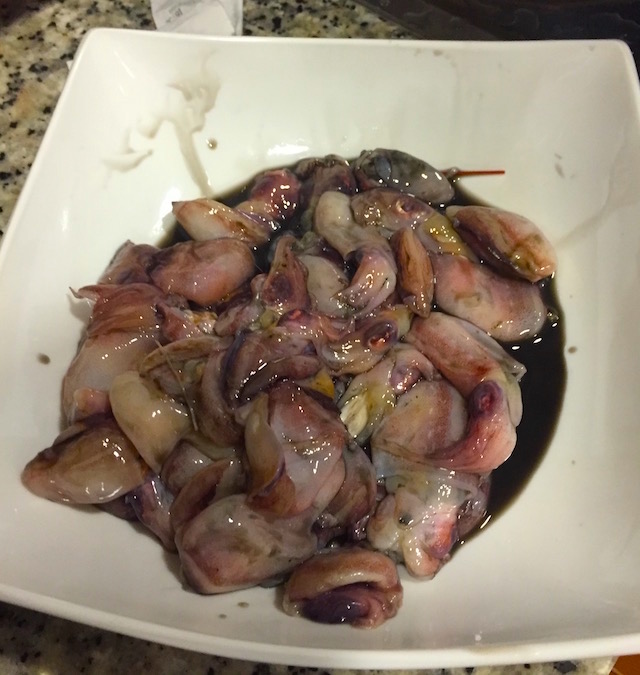
Prep the Seafood
We then started the mussels steaming so we had something to snack on while preparing the paella. He used very little liquid in the mussel pot—I guess they released enough liquid. He did add some smoky paprika for flavor. Very tasty!
Prep the seafood you will put on top of the paella. Emilio had langostino for the top of our Valencian paella. At home, I have used shrimp, mussels, and squid.
Note: I had never prepared squid before, so I asked the fish guy at Wegman’s how long to cook it. He replied no more than one and a half minutes OR one hour!
By that, he meant that to end up with tender squid, you must cook it briefly or for a very long time. I kept it under a minute and a half, and it was superb!
Type of Rice and How Much
Note: The following is the only “fact” I have in this piece. I like facts, but since I learned them on the fly, I can only pass the guidelines on to you to make up as you go along.
You calculate the amount of rice for paella as 50 grams per person. The amount of liquid is four times that of rice, so 200 grams per person.
He kindly measured the rice—50 grams is about one-half cup. So now, I use one-half cup of rice and 2 cups of broth per person at home. He had bomba rice for us. I have used Valencia rice and Arborio rice at home—don’t use long-grain rice or sticky sushi rice.
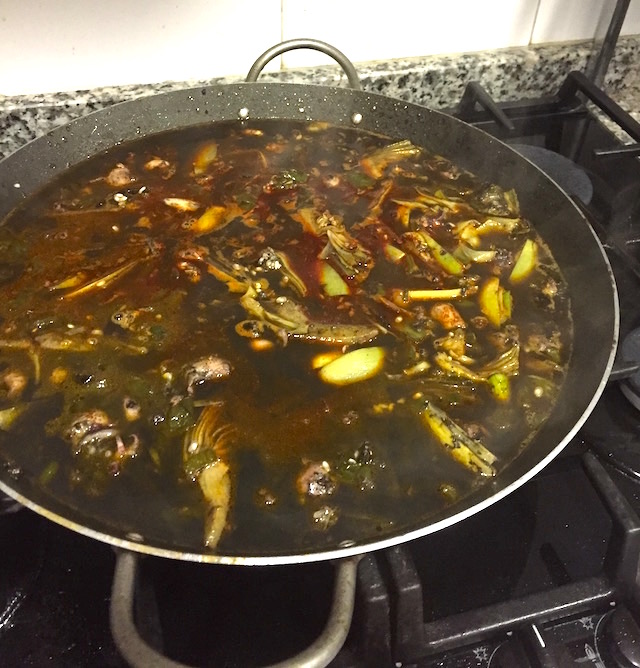
Cooking Tips
You can cook the paella on top of the stove or on a grill. (If you’re a pro or like cooking toys, buy a circular cooking ring to fit your paella pan and deliver even all overheat!)
Use a temperature that doesn’t burn when you’re sauteing and keeps it bubbling once you’ve added the broth. If you’re cooking on the top of the stove, you may need to move the pan around a bit to keep the entire bottom of the pan at a consistent temperature.
I was nervous about this at home, but it’s apparent if/when you need to make adjustments.
Notes
- Emilio finishes his paella in the oven to ensure it is dry and crusty on top and bottom. If you want to do this, you should turn the oven on before starting the prep.
- It’s important to note that we cooked the mussels separately from the rest of the paella and then added them to the pan when the paella was done. I find it easier to get them to open if steamed separately.
Paella Pan for Valencia Paella
I bought an inexpensive 15-inch carbon steel paella pan from Amazon. I only knew how to cook paella in a paella pan, so I decided to go for it. There are many sizes and materials, but I selected the traditional (and economical) option—carbon steel.
It requires some maintenance since it can rust, but I have to take care of my wok similarly. I chose a size that fit my stove top, oven, and grill measurements.
I then selected a 15-inch pan rated for 3-5 servings since I thought that would be most useful, and I could always get a second one if we were going to have a lot of people or wanted a selection of different types of paella. I have used it to feed 2-6 people, so it was a good choice.
Peppers & Tomatoes
We thinly sliced some Italian sweet peppers and sauteed them in olive oil in the paella pan until soft. He then grated a fresh tomato over the peppers and cooked it down. That was a new one for me! I will try it when we have good tomatoes in the summer; I have used canned diced tomatoes.
Emilio offered this guidance: don’t add tomatoes and onions to the same paella because they will add too much liquid together. I have added both, but I drain the tomatoes very well, unlike his grated tomato, which includes a lot of liquid.
Emilio uses Italian green peppers with thinner walls than bell peppers adds less liquid.
Artichokes & Rice
The next step was peeling and quartering fresh baby artichokes and then adding them to the pan to saute until soft. He put a glass lid on at this point to help the artichokes cook. Since I only have canned artichoke hearts at home, this was not a problem—unfortunately.
We added the rice all at once and stirred it to coat it evenly with the oil and the vegetables. We then added the cuttlefish ink to make it black and stirred it. (Like almost anything else, you can get cuttlefish ink from Amazon and other culinary sites.)
He also added a packet of Spanish paella seasoning, but I don’t know what was in it. At home, I added a pinch of saffron at this point. As you can see, this is a lot like making risotto—until the next step.
Once this was all stirred together, we added the hot seafood broth. Stir to combine, and then let it bubble away.
Cook – Stir – Cook
We let it cook for about 20 minutes, maybe stirring gently once or twice and occasionally re-positioning the pan on the burner. The paella is done when it is dry throughout and has formed a nice brown crust on the bottom (soccarat).
One test for doneness is to tilt the pan to thirty or forty-five degrees—the paella should not fall out!
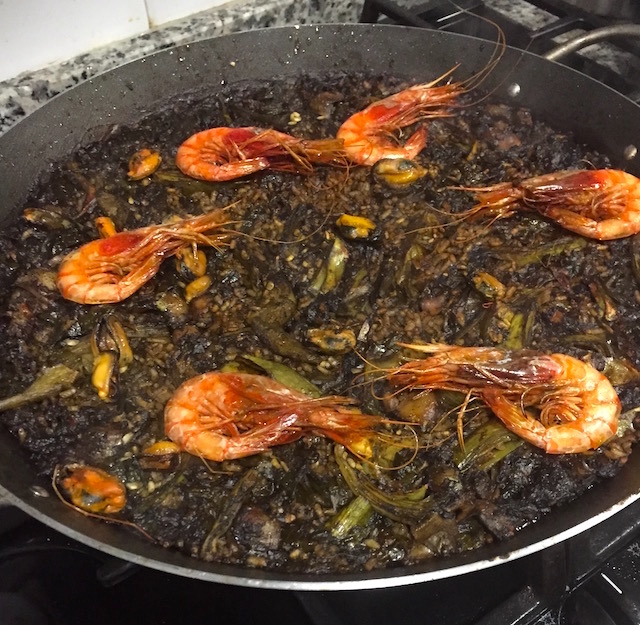
Add & Cook the Seafood for Valencia Paella
Now that the rice is finished, it’s time for the seafood on top. You can cook the seafood separately and place it on top of the rice before serving. This is a good solution if you have a mix of seafood that needs different cooking times or methods. Emilio cooked the langostino over the paella for the last few minutes.
At home, I lay the seafood on top of the rice and then cover it all with the lid of my wok so that the seafood can steam. The wok lid works well because it has the right circumference and a nice high dome.
I put the seafood on in order of the amount of time it needs to cook with the foods requiring the longest time going on first—covering again after each addition. Since this is the method I use, I don’t finish it in the oven like Emilio did.
Enjoy—I’ll be excited to hear about your paella adventures!
Aunt Judy
Aunt Judy's Valencia Paella Recipe
Ingredients
- ½ pound mussels
- 3 tablespoons olive oil
- 1 onion chopped
- 1 Italian sweet pepper thinly sliced
- 2 14.5 ounce cans cans dice tomatoes drained well
- ½ pound artichoke hearts peeled and quartered
- 2 cups Arborio rice
- Cuttlefish ink optional
- 1 pinch saffron
- 6 cups seafood stock
- salt and pepper to taste
- ½ pound shrimp peeled or not peeled, up to you
- ½ pound squid cleaned and cut into tight rings
Instructions
- Prep all the ingredients including the pepper, tomatoes, artichoke hearts and seafood stock. You want the seafood broth hot before adding to the rice so heat it up in a separate pan just before adding.
- Heat the oil in the paella pan over medium heat until hot. Add the onion and cook for a minute or two.
- Add the pepper slices and continue cooking for 2 to 3 minutes.
- Add the diced tomatoes and continue cooking for 3 - 5 minutes.
- Add the artichoke hearts, cover the pan and cook for another 3 minutes.
- Add the rice and stir all the ingredients to evenly cover the rice with the oil and vegetables.
- Add the pinch of saffron and stir once more.
- Add the seafood stock, stir and let it cook on medium low to a simmer. If too hot, reduce the heat. If not hot enough, add some more. Cook for approximately 20 minutes.
- While the rice is cooking, give it just one or two more stirs and re-position the pan on the stove top occasionally so it doesn't get too hot on any one part of the pan.
- The rice is done when it is "dry throughout and has formed a nice brown crust on the bottom" of the pan.
- While the rice is cooking, steam the mussels in another pan so they are ready to add to the dish at the end.
- When the rice is done cooking and all the mussel shells have popped open, add the shrimp to the pan cover and cook for a few minutes.
- Add the squid, cover and cook for no longer than 1 and ½ minutes.
- Return the mussels to the pan and serve with aioli.
- Add the rest of the seafood to the top of the rice, cover and cook (steam) until the squid and shrimp are just tender, about 1½ minutes.

